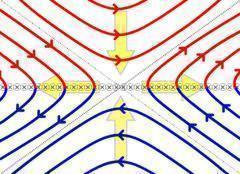What is Permittivity of Space?
Permittivity of free space or vacuum permittivity refers to the interaction between electricity and force as well as the effects of space on electrons. In a purely theoretical sense, permittivity of free space refers to a vacuum’s ability to maintain the bonding effects of individual electrons. Permittivity of free space allows the size and intensity of an electric or magnetic field to be measured within a vacuum.
How Permittivity of Free Space Works
Permittivity of free space can be seen as a constant in theoretical physics and can be calculated with the following formula, known as Coulomb’s Law:
![]()
Where q1 and q2 are the charges and r is the distance between them.
Applications
In addition to calculating the size and intensity of electric and magnetic fields within a vacuum, permittivity of free space is also used to calculate how much force an electric or magnetic field will have on surrounding objects within a vacuum. As a result of this, permittivity of free space is critical to calculating how much energy is required to move a satellite, space shuttle, or other object in space and how far the object will move.


Comments - No Responses to “What is Permittivity of Space?”
Sorry but comments are closed at this time.